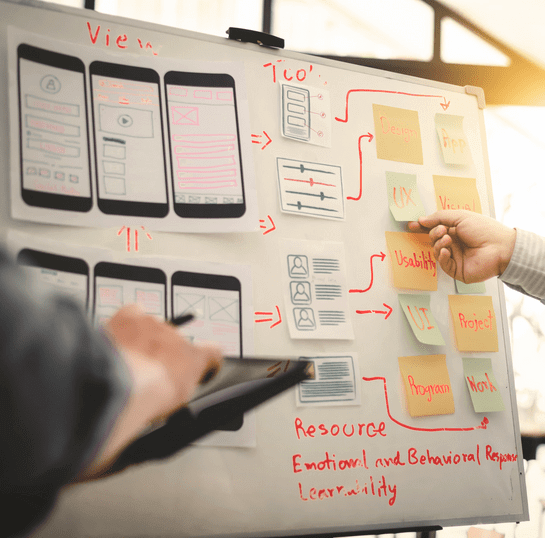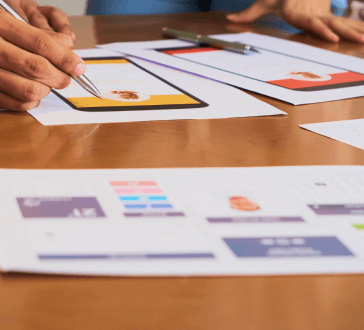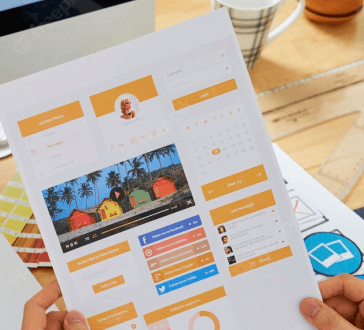November 5, 2021
A Beginner's Guide to User Research
March 05, 2022
Thorough user research is the way to understand users better, eliminate bias and assumptions from your design, and build products that are relevant to users. Here are some tips to help you get valuable insights from your user research, as well as the best research methods for each stage of design. 👨🔬📊
A Beginner's Guide to User Research
Whether you’re building a website or a consumer product, you can’t build great products without great user research.
User research helps you understand the needs, behaviors, and motivations of the users of your product. It helps you gauge how your design will impact your users and foresee potential pitfalls.
Neglecting user research or not performing the right kind of research could result in low-quality data. Using this data to make design decisions will lead to products that don’t address users’ problems or products that are unnecessarily complex and confusing. This will discourage potential users from returning and stall the growth of your business.
Thorough user research is critical to building great designs and delivering good user experiences. In this article, we’ll look at how to conduct user research as well as the different types of user research and how they fit into each stage of design.
| Goals of User Research | Understand Users & Context | Minimize Costly Errors | Design Better Products |
|---|---|---|
| Gain insights into user behavior, understand users’ needs and frustrations | Eliminate designers’ assumptions and validate design decisions with data | Increase user satisfaction and get a higher ROI from your product |
Getting the most out of your user research
Here’s how to conduct user research in order to get relevant, meaningful, and usable insights about your users:
- Set clear and specific research objectives: Keep your research focused and limited to particular issues rather than trying to cover a lot of ground. Also, frame your questions so that you can get specific and detailed inputs from users; avoid asking questions with yes and no answers and instead try to elicit more descriptive responses.
- Recruit the right participants: The participants you select for testing should be actual users of the product. Don’t choose your research participants from among your friends, family, or employees, even if they belong to the right demographic. The demographic fit alone doesn’t guarantee that they’ll have similar experiences using the product. To get accurate data, select people who will actually be using the product.
- Use appropriate research methods: Which method to use for different kinds of inquiries isn’t set in stone. It depends on the time available and the type of insights that need to be gathered. Be flexible and choose the research methods that make sense for the kind of data you want to gather. Do use a mix of quantitative (usability tests, accessibility tests, etc) and qualitative (interviews, field studies, etc) methods, as these both provide different kinds of insights.
- Ask the right questions: To get meaningful data, make sure your questions accurately reflect the research objectives you defined earlier. Set aside your own assumptions — biased questions that prime participants to respond in a particular way can pollute your data and make it unusable.
- Record sessions and document findings: The most thorough research efforts can be made insignificant if you aren’t able to capture the data in enough detail. Instead of relying on handwritten notes during interviews, make recordings so that you can capture more detail. Detailed documentation will boost transparency across the entire team, help you extract actionable insights, and prevent errors further down the line.
- Spend time on analysis and reporting: Inadequate analysis can lead to superficial or inaccurate findings. Budget time for analysis at the start of the project. Also, make sure you clearly communicate your findings to others in actionable, easy-to-consume formats such as dashboards and single-page reports.
Choosing the best user research methods for each stage
While you can maximize the benefits of user research by beginning it early in the design process, you can be sure that you’ll get valuable insights no matter what stage of design you are at. Whenever possible, you should do user research at every stage of the design process.
However, it can be difficult to determine which type of user research to use at which stage. Here are the stages of design and the most commonly used user research methods for each:
Stage 1: Discovery

This stage of research should help you gather requirements and understand project constraints.
At this point, your focus would only be on conducting generative user research. Your approach here should be open-ended and exploratory.
Observe users, conduct interviews, and try to uncover what users are looking for. These are some of the types of user research that could be used here:
- Stakeholder interviews can help uncover business objectives and challenges faced during any previous attempts.
- User interviews can help you gain in-depth information about users’ challenges, needs, behaviors, and attitudes.
- Focus groups bring together a small group of users for a discussion, helping you understand multiple perspectives.
- Field studies conducted in the user’s natural context can reveal insights that laboratory conditions might fail to capture.
- Surveys and questionnaires provide a quick and easy way to get data from a large number of users.
- Competitive analysis can help you identify gaps in the market that your product could fill.
Stage 2: Design
Once you begin designing the product, it becomes important to dive in at a more granular level.
While the previous stage of research would have helped you understand what people say they need, it’s possible that your users don’t know what they want. They may not be able to visualize the problem in a comprehensive way or imagine new, disruptive ways of solving the problem. The only way to learn how users will actually behave when they are presented with a particular solution is to observe their responses when interacting with a prototype or with specific information relating to it. Here are some of the appropriate research methods at this stage:
- Persona building can help researchers closely understand users and tailor products to meet the needs of specific users.
- User stories are short statements that help define specific user goals.
- Journey mapping involves visualizing the path that users need to take to accomplish a certain goal.
- Card sorting, in which users sort items into different groups, helps researchers understand how users categorize information.
- Tree tests serve the opposite function, validating whether users are able to find information within a given hierarchy of items.
- Task analysis involves systematically studying the steps users take to complete a given task.
Stage 3: Prototyping

Once you have a prototype of the product, you’ll want to assess whether users are able to use it easily and also how it compares to other solutions. These are some of the types of user research that can be helpful here:
- In-person usability studies provide real-time insights into how users interact with a product. Observing how users interact across the entire design flow can be invaluable in identifying roadblocks. Do make sure that tasks are designed to reflect a real context of use.
- Benchmark testing compares the performance of a product against industry standards.
- Accessibility testing is used to determine whether the product is accessible to users with disabilities.
Once the design is built, it’s all about proactively seeking feedback and optimizing the users’ experience. Here are some of the types of user research that can be helpful here:
- A/B tests: can help you understand users’ design preferences by comparing how they respond to any two designs.
- Click tests: ask users where they would click to complete a given task, helping researchers understand how users interpret a design.
- User surveys: with a mix of closed-ended and open-ended questions can help to shed light on users’ opinions.
- User feedback review: Examining users’ comments and reviews can also highlight areas that need improvement.
- Analytics review: Tools like Google Analytics can help reveal trends in user behavior over time.
- Search log analysis: Studying what users are searching for within the product can help indicate gaps. An FAQ review can also provide helpful insight into user questions.
User research is an indispensable part of good design
Designing based on assumptions can be expensive and time-consuming. Putting users at the center of your approach is the key to design success.
Knowing how to conduct user research is essential for UX designers. User research provides a clear roadmap for design. It helps UX designers create product designs that are relevant and easy to use. Comprehensive user research will help you eliminate assumptions and build products that solve problems for real users.
More from Pixians


November 5, 2021

November 5, 2021